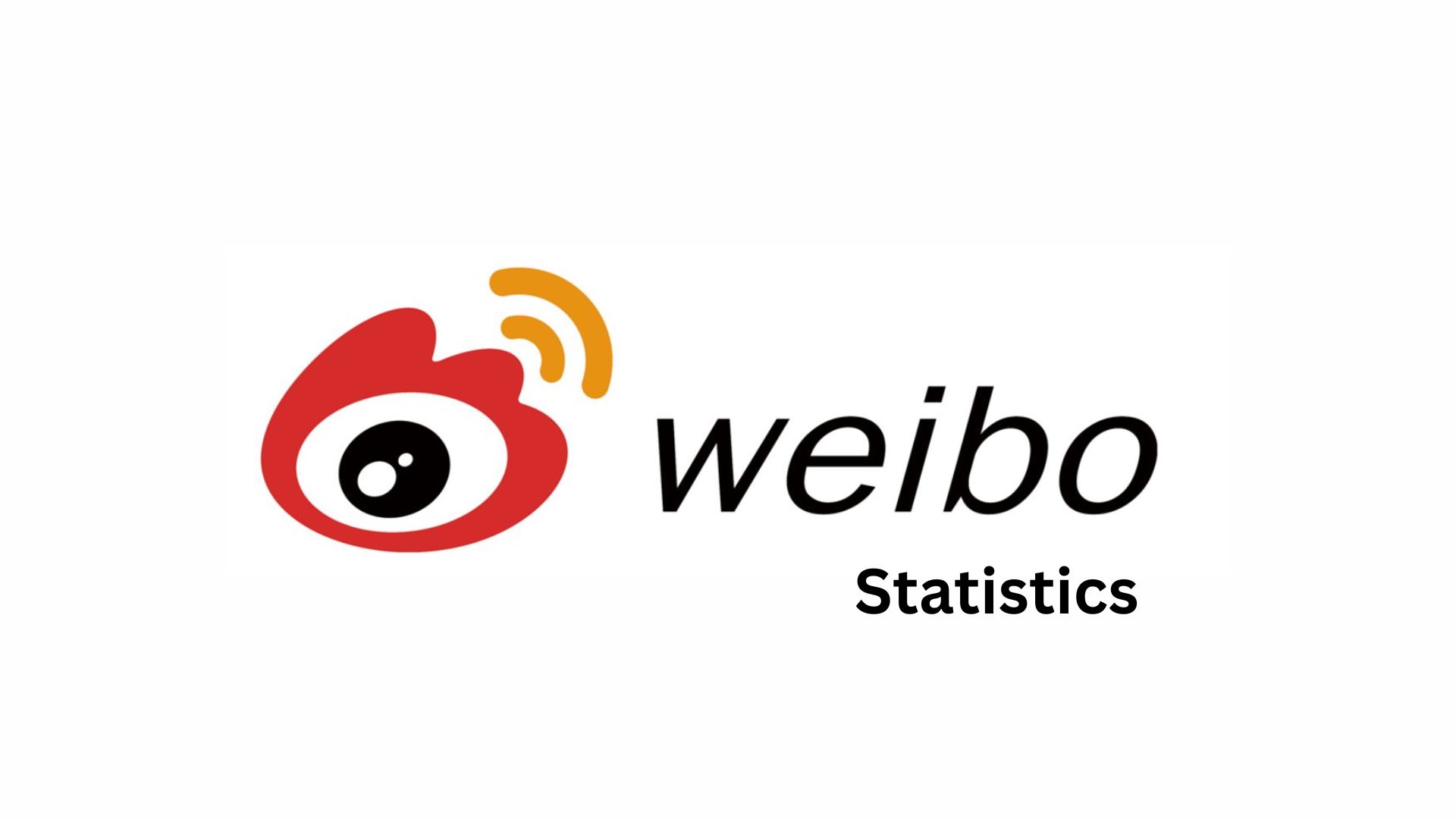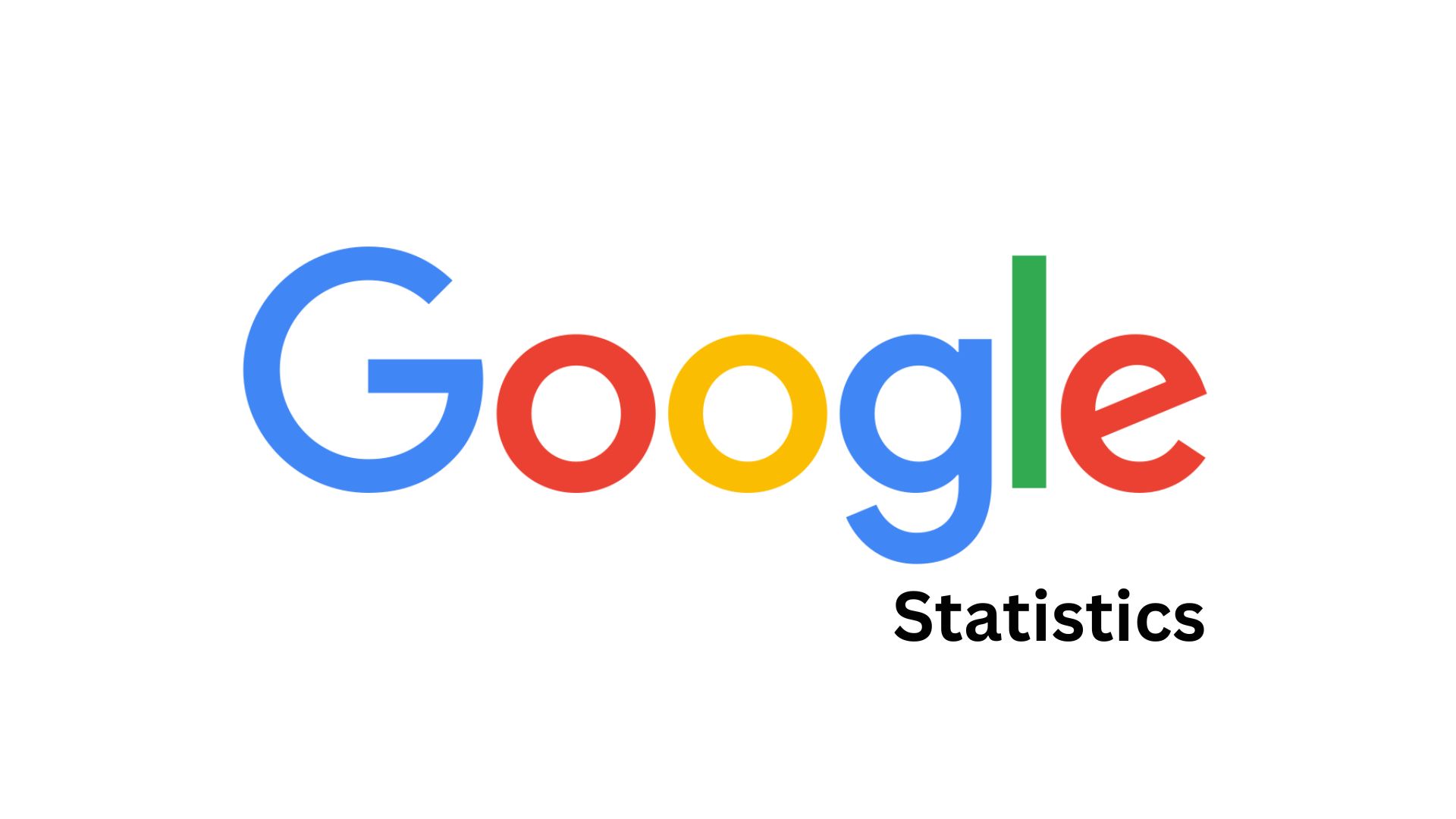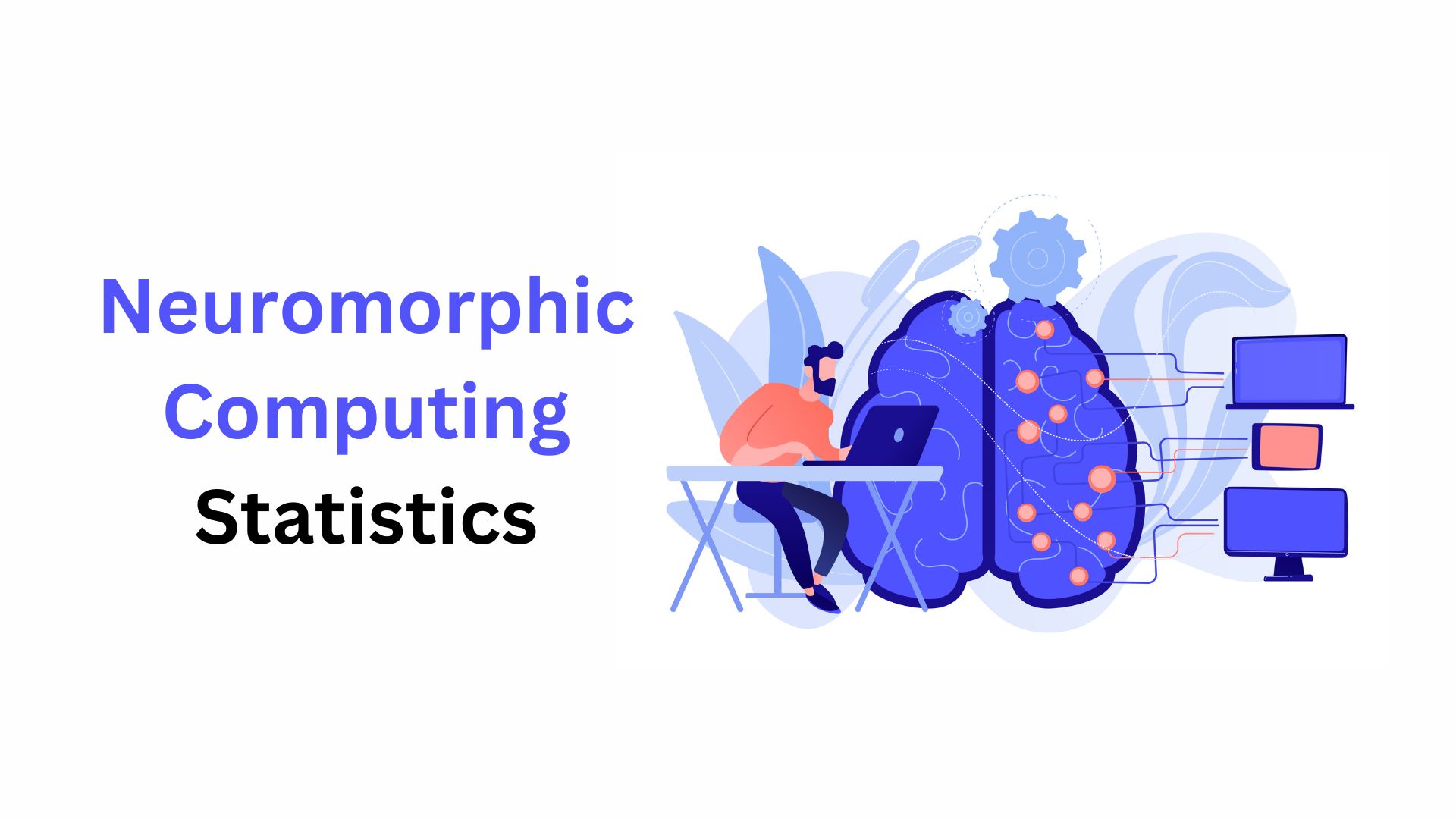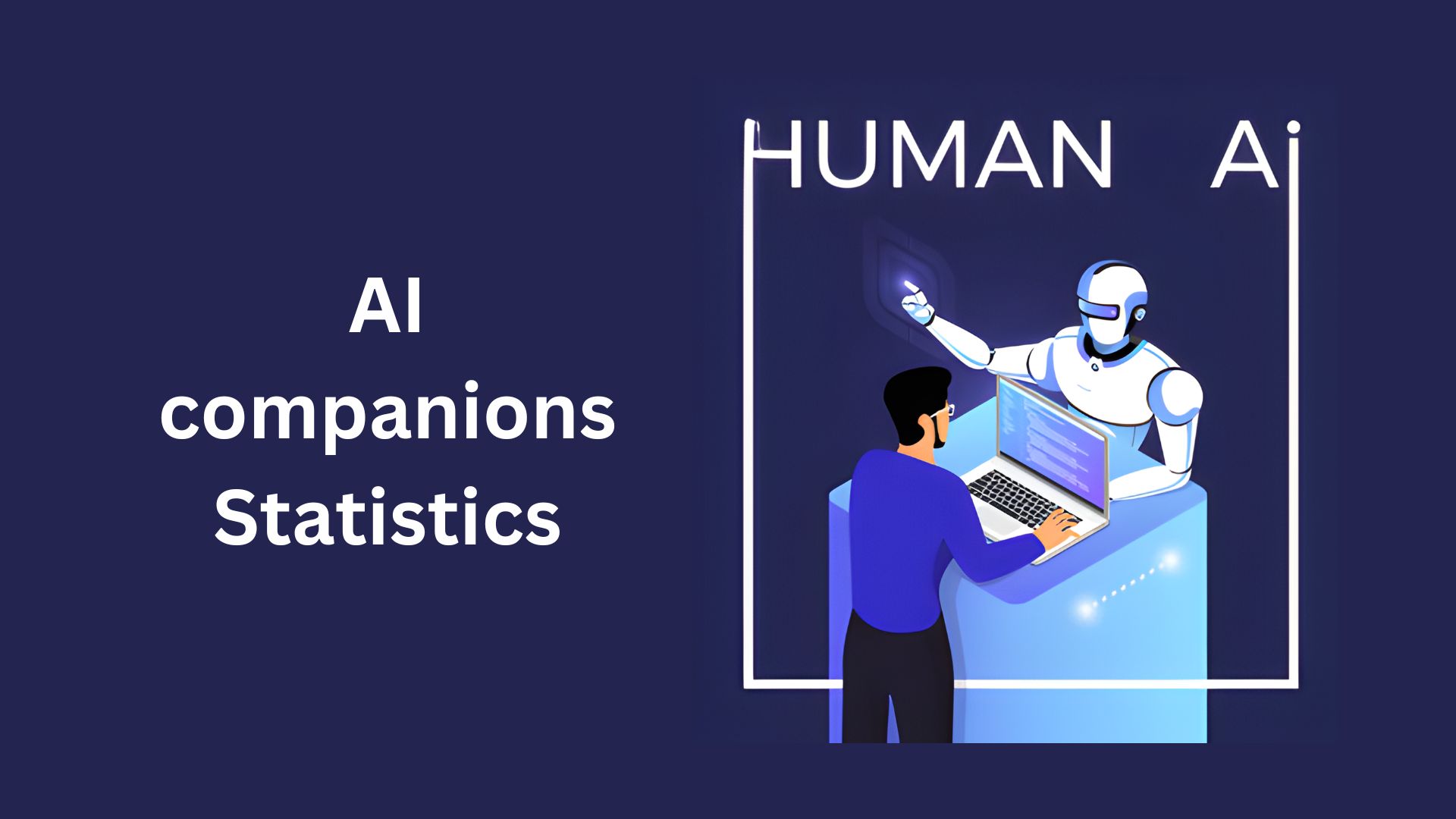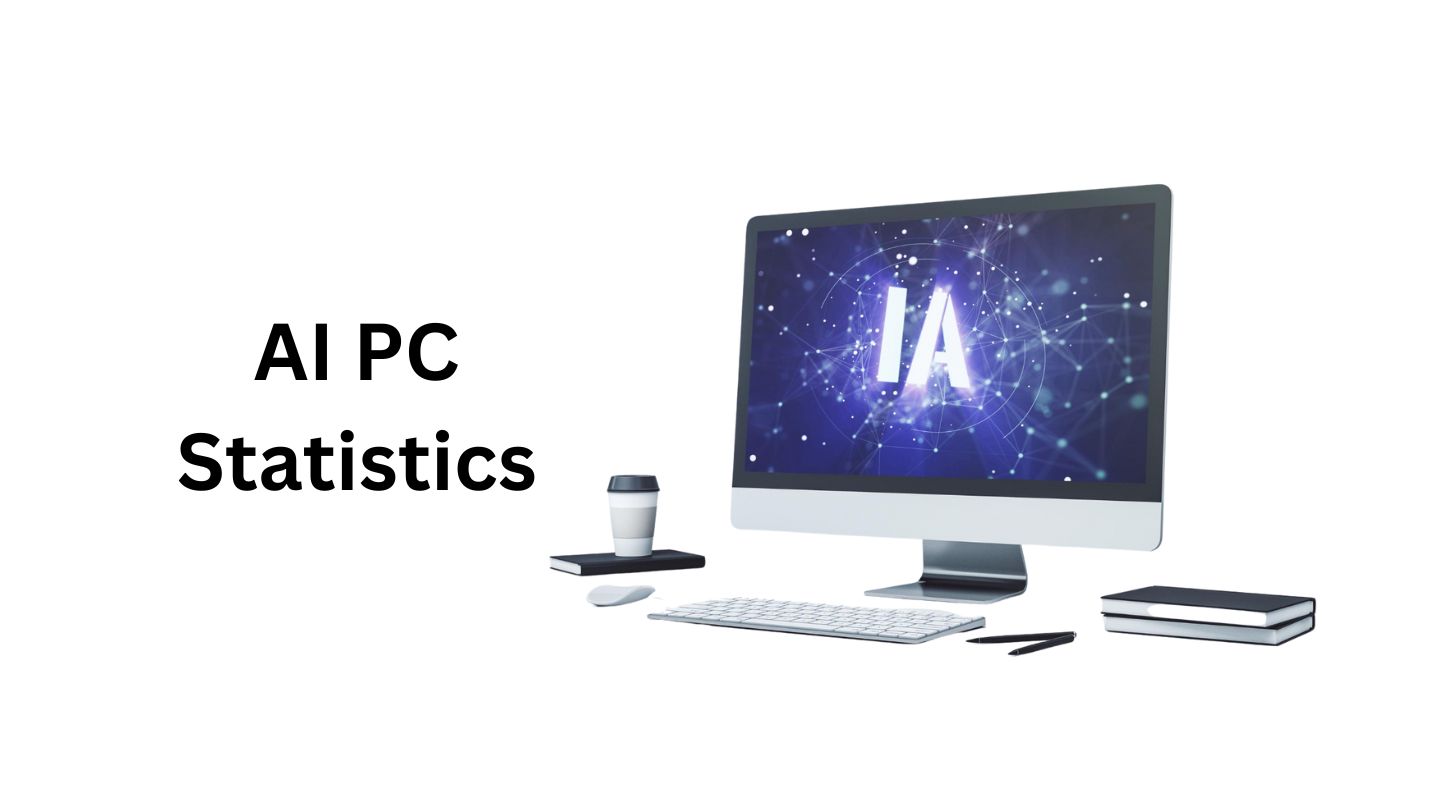Intelligent Virtual Assistant Statistics and Facts By Market Size, Type, Region, Key Players, Adoption, Insights And Trends (2025)
Updated · Oct 15, 2025
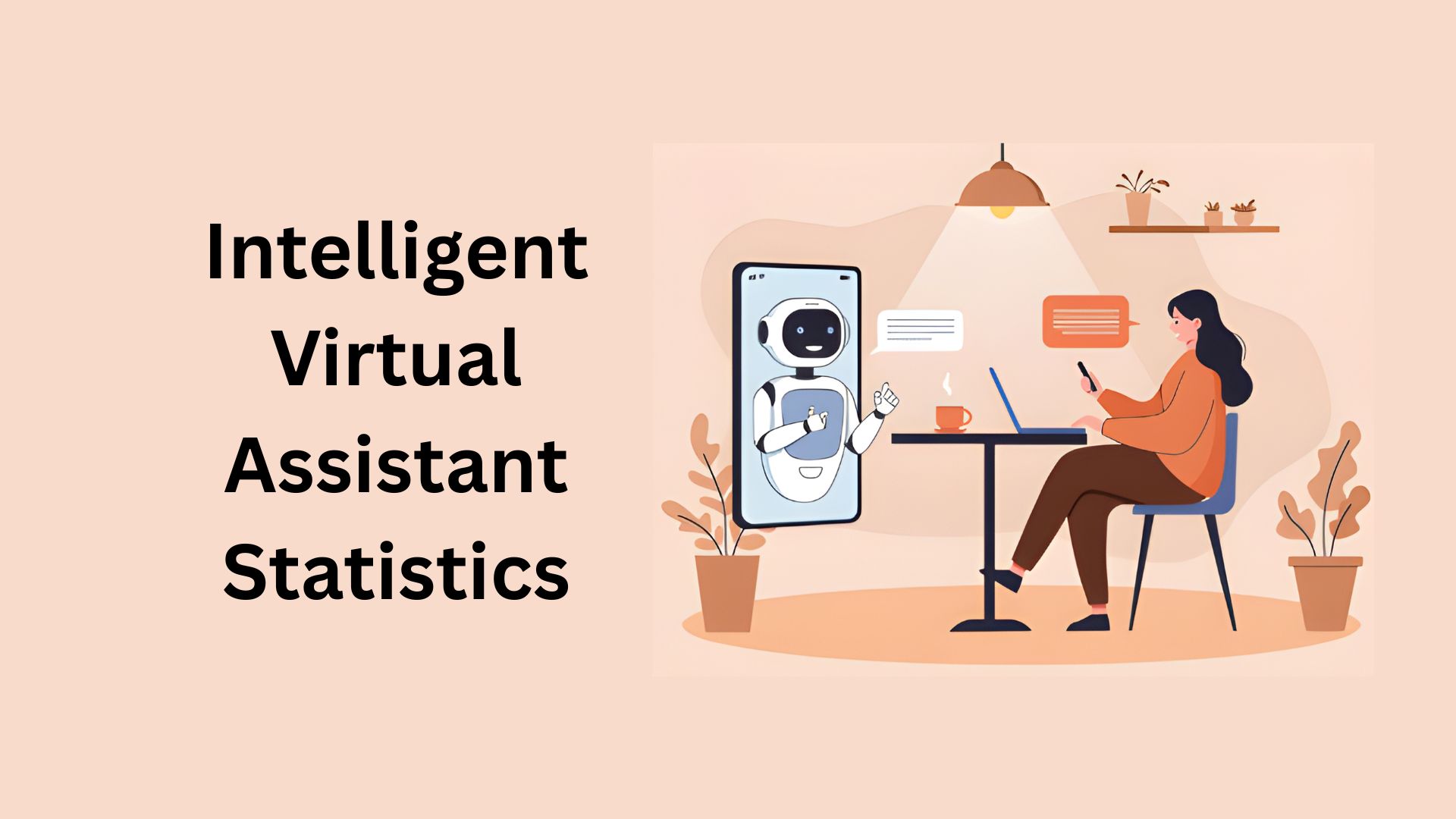
Table of Contents
- Introduction
- Editor’s Choice
- General Intelligent Virtual Assistant Statistics
- Characteristics of Intelligent Virtual Assistants
- Intelligent Virtual Assistant Market Size
- Sector-Wise Usage Analyses of Intelligent Virtual Assistant
- Most Used Intelligent Virtual Assistant Statistics
- By Demographics
- Time Saved by Using an Intelligent Virtual Assistant
- Adoption Statistics of Virtual Assistants in the Home
- Voice Assistant Market Statistics
- Top 5 Voice Search Statistics
- Chatbot Market Size
- Smart Speaker Market Size
- Perceived Intelligence of Virtual Assistants Among Users
- Consumer Shopping Trends Through Virtual Assistants
- Educational Qualifications of Intelligent Virtual Assistants
- Reasons For Implementing an Intelligent Virtual Assistant
- Conclusion
Introduction
Intelligent Virtual Assistant Statistics: Intelligent Virtual Assistants (IVAs) are among the most impactful technological developments in artificial intelligence today. Some smart tools used within are machine learning (ML) and natural language processing (NLP) to understand and respond to people in a human-like way, making interactions with technology smoother and more natural.
They help users with many tasks, such as scheduling meetings, answering customer questions, and providing quick, personalized support on different platforms. With simple interfaces, strong backend systems, and easy data integration, IVAs have become a key part of industries like customer service, healthcare, and retail, improving both efficiency and user experience. Operating round the clock, they handle numerous conversations simultaneously, reduce workload, and significantly lower operational costs by automating repetitive processes.
This article on Intelligent Virtual Assistant Statistics includes several current analyses of the market from different insights, which will guide you effectively.
Editor’s Choice
- As of 2024, the global Intelligent Virtual Assistant market has accounted for USD 20.7 billion and will reach USD 27.9 billion by 2025.
- In the global market of Intelligent Virtual Assistants by 2025, the total revenue estimated to be generated by Chatbots will be USD 19.7 billion, followed by smart speakers (USD 8.2 billion).
- A report published by scoop.market.us in 2024 stated that Apple Inc. dominated the market of intelligent virtual assistants with a share of 18% and 24/7 Customer Inc. at 17%.
- The North American market of intelligent virtual assistants captured the highest share of 42.5%.
- In 2024, Google Assistant accounted for the highest usage share of 39%.
- People aged 30 to 39 made up the largest group of Intelligent Virtual Assistant users, representing around 32% of the total user base..
- Almost 50% of IVA users saved less than 5 hours per week.
- The global chatbot market will reach up to USD 9.30 billion by 2025 and is expected to reach USD 27.07 billion by 2030.
- The smart speakers market has seen rapid growth and is expected to rise from USD 14.56 billion in 2024 to USD 19.14 billion by 2025.
- Amazon’s Alexa is termed the most intelligent virtual assistant, earning recognition from 44% of respondents.
General Intelligent Virtual Assistant Statistics
- As mentioned in market.biz, businesses turn to outsourcing mainly to cut expenses, with around 59% saying cost savings is the top reason.
- Intelligent Virtual Assistants can lower operating costs by up to 78%.
- Talent quality is strong: about 30.9% of IVAs have business degrees, many previously worked as administrative assistants, and 91% in the U.S. hold a college degree.
- Small companies increasingly rely on external help: 24% outsource to boost efficiency, and roughly 37% outsource at least one function.
- Work models are shifting, too; by 2028, an estimated 50% of the U.S. workforce could be virtual.
- Almost 80% of companies are currently planning to adopt IVAs for more flexible workforce structures.
Characteristics of Intelligent Virtual Assistants
- Ideal for solving customer queries quickly and accurately.
- A valuable tool that supports the customer service team.
- Focuses on putting customers’ needs first.
- Delivers personal context-based experiences.
- Also understands emotions through sentiment analysis.
- Learns and improves continuously using machine learning.
Intelligent Virtual Assistant Market Size
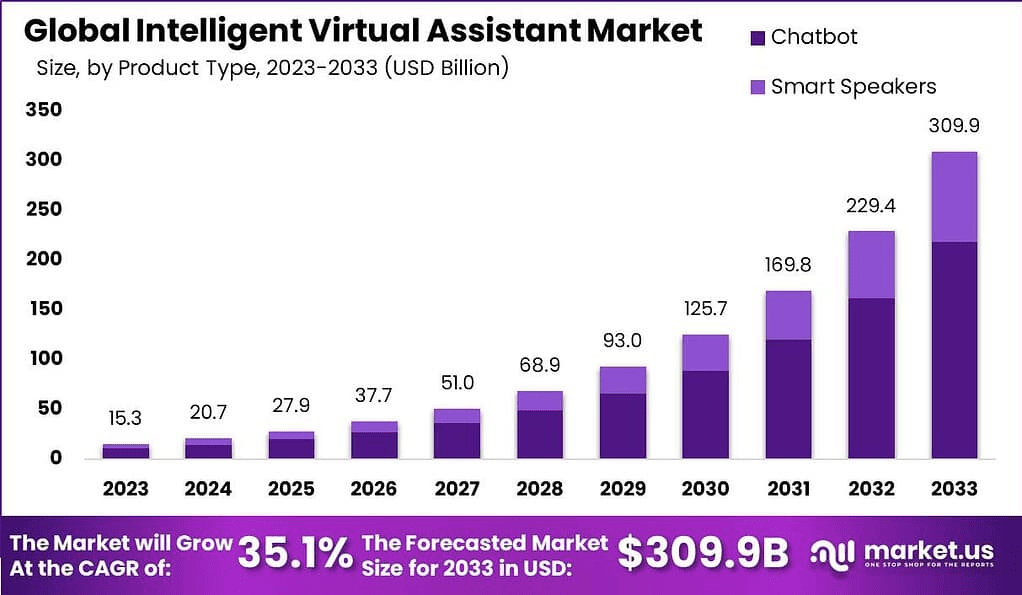
- As of 2024, the global Intelligent Virtual Assistant market has accounted for USD 20.7 billion and will reach USD 27.9 billion by 2025.
- In the coming years, the market size is expected to reach USD 37.7 billion by 2026, USD 51 billion by 2027, USD 68.9 billion by 2028, USD 93 billion by 2029, USD 125.7 billion by 2030, USD 169.8 billion by 2031, USD 229.4 billion by 2032, and USD 309.9 billion by 2033.
- The IVAs market will grow at a CAGR of 35.1% from 2025 to 2033.
By Product Type
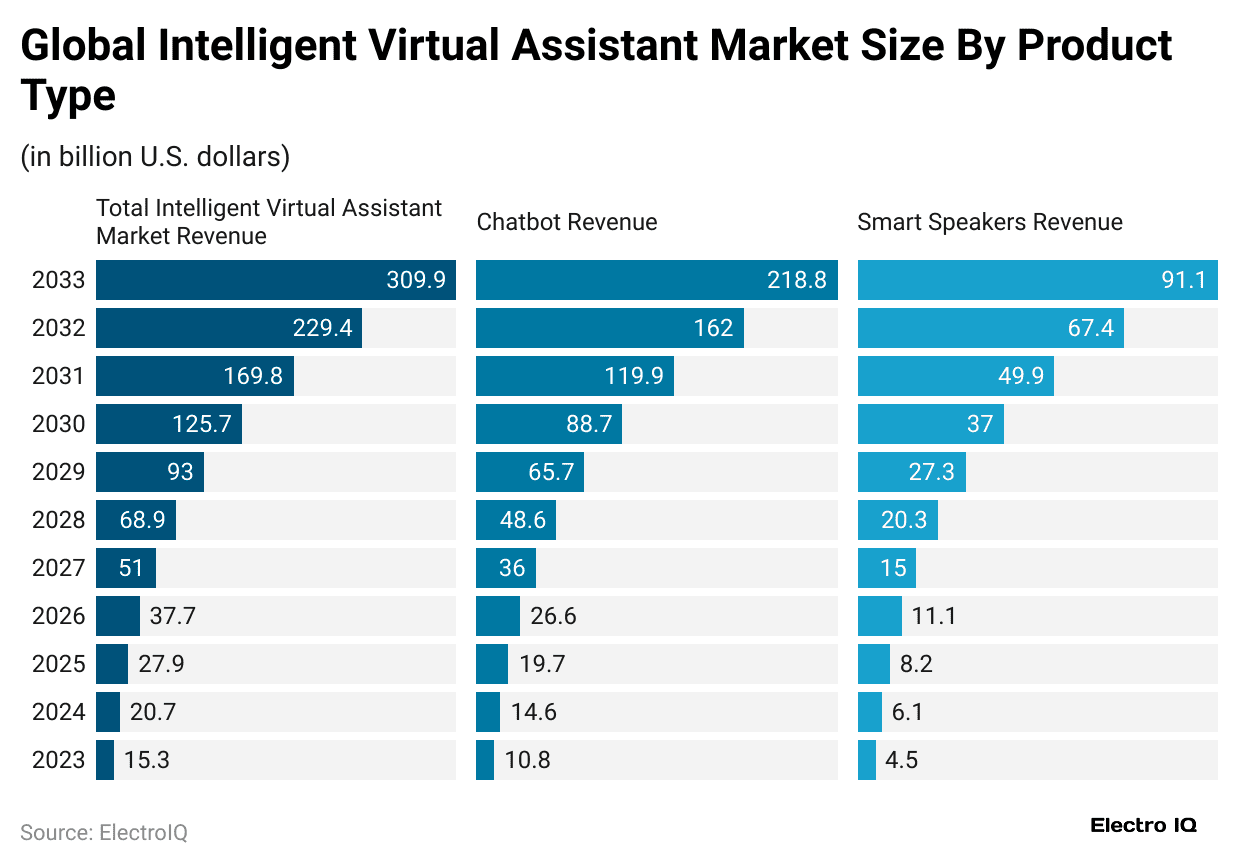
- In the global market of Intelligent Virtual Assistants by 2025, the total revenue estimated to be generated by Chatbots will be USD 19.7 billion, followed by smart speakers (USD 8.2 billion).
Furthermore, in the coming year, the total revenue accounted for by product types is stated in the table below:
| Year | Chatbot | Smart Speakers |
| USD billion | ||
|
2026 |
26.6 | 11.1 |
| 2027 | 36 |
15 |
|
2028 |
48.6 | 20.3 |
| 2029 | 65.7 |
27.3 |
|
2030 |
88.7 | 37 |
| 2031 | 119.9 |
49.9 |
|
2032 |
162 | 67.4 |
| 2033 | 218.8 |
91.1 |
By Key Players
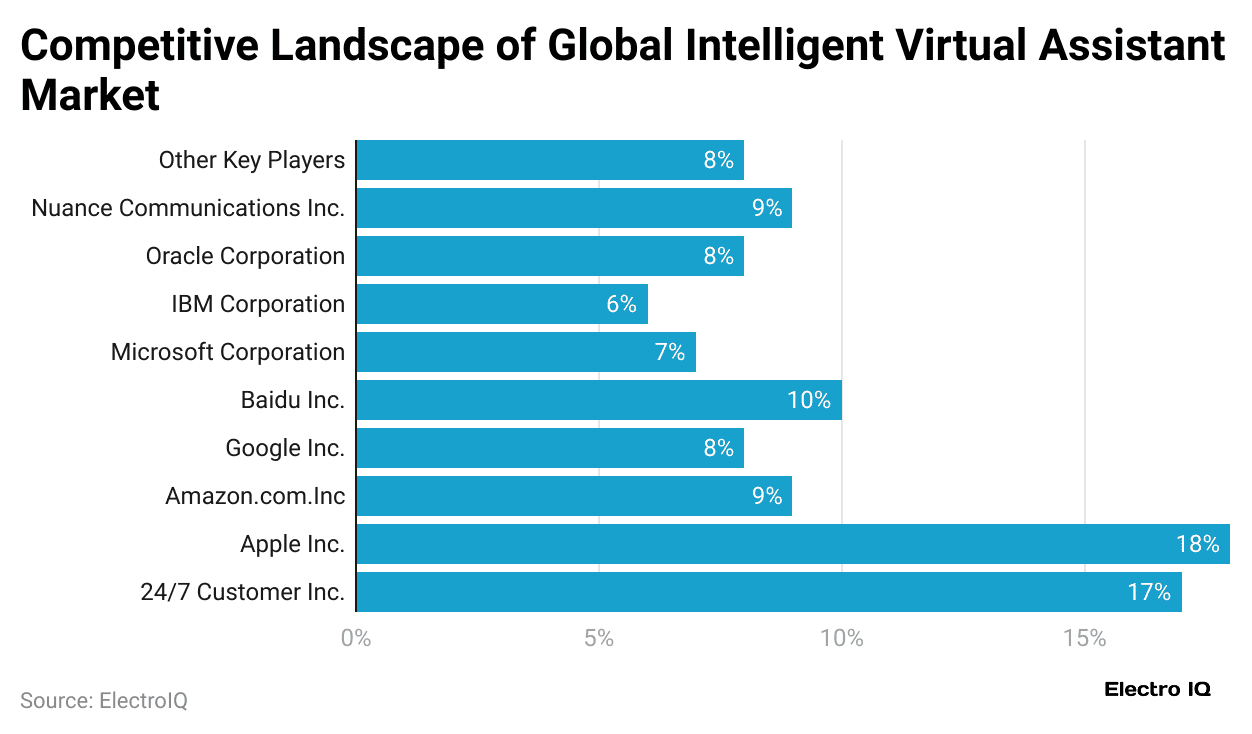
- A report published by market.us in 2024 stated that Apple Inc. dominated the market of intelligent virtual assistants with a share of 18% and 24/7 Customer Inc. at 17%.
- Baidu Inc. holds the largest share with 10% of the Intelligent Virtual Assistant market, followed by Amazon.com Inc. and Nuance Communications Inc., each with 9%.
- Google and Oracle control 8% each, while Microsoft and IBM contribute 7% and 6%.
- Other players of the market accounted for a share of 8%.
By Region
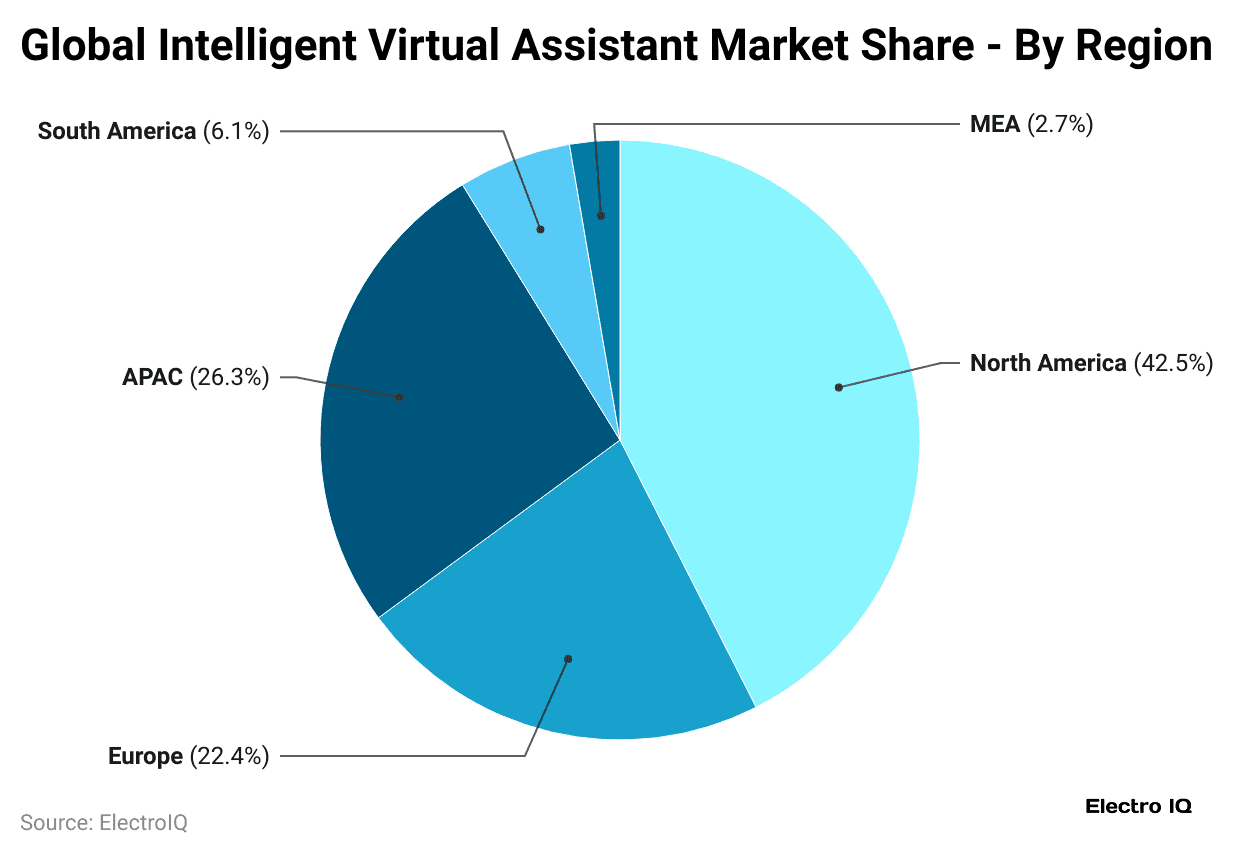
- As of 2024, the North American market of intelligent virtual assistants captured the highest share of 42.5%.
- Furthermore, the market shares of other regions were followed as APAC (26.3%), Europe (22.4%), South America (6.1%), and MEA (2.7%).
Sector-Wise Usage Analyses of Intelligent Virtual Assistant
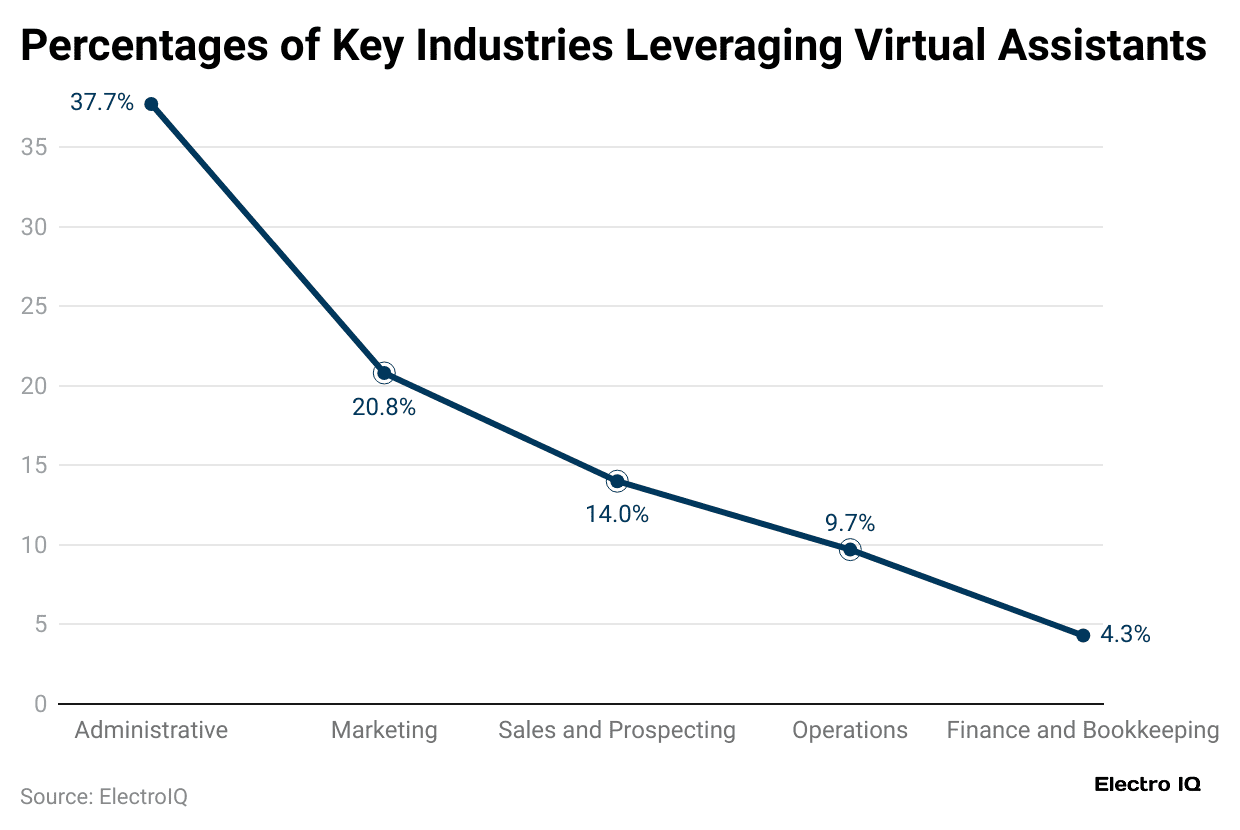
- In 2025, around 37.7% of businesses will be using virtual assistants in their administrative segment..
- Around 20.5% implemented in marketing sectors, while sales and prospecting activities with 14%
- Moreover, others are followed as operations (9.7%), customer service (6.3%), and finance & bookkeeping (4.3%).
- Lately, all other services accounted for a usage share of 7.5%.
Most Used Intelligent Virtual Assistant Statistics
- In 2024, Google Assistant accounted for the highest usage share of 39%.
- Followed by Amazon’s Alexa (36%), Apple’s Siri (29%), Microsoft’s Cortana (11%), Samsung’s Bixby (10%)
- Only 5% used others, and 21% never used any assistant.
By Demographics
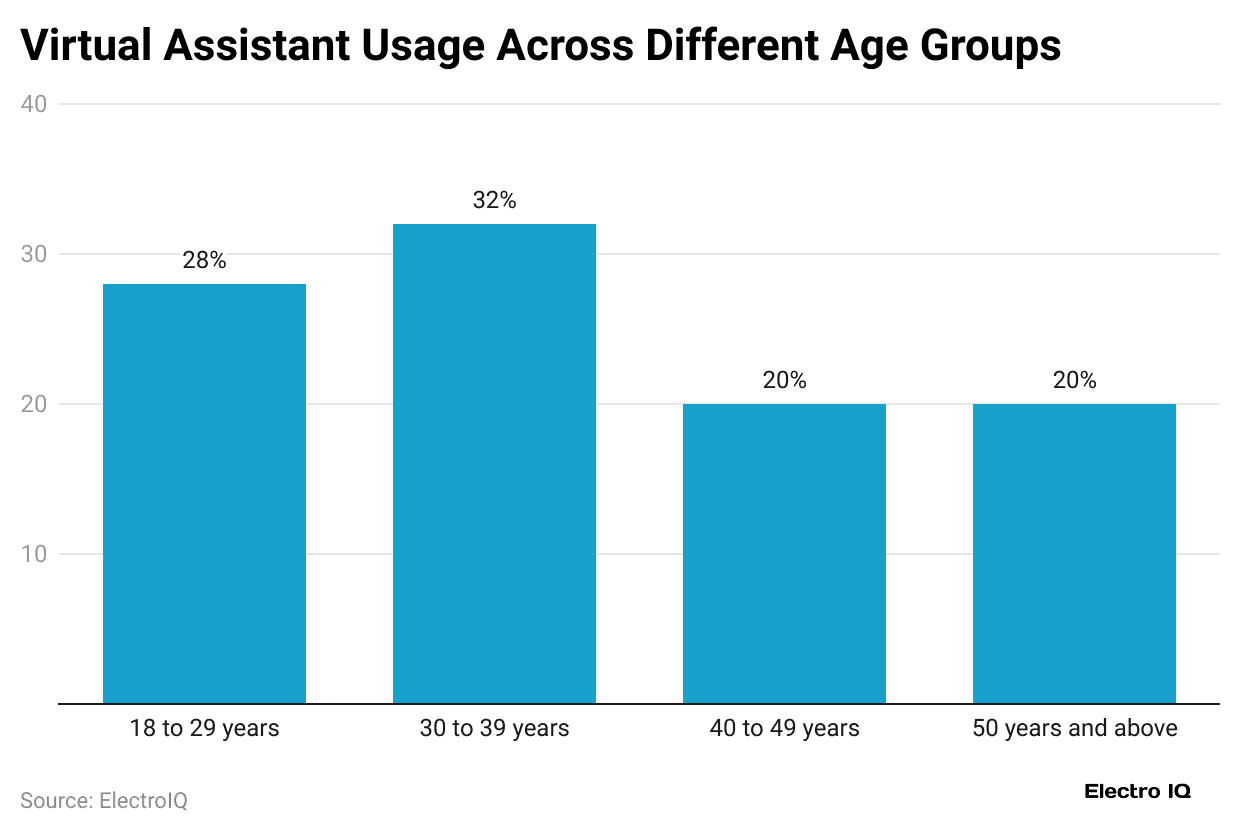
- In 2024, people aged 30 to 39 made up the largest group of Intelligent Virtual Assistant users, representing around 32% of the total user base.
- Meanwhile, those aged 18 to 29 years represented 28% of users.
- The remaining share was evenly split, with both the 40 to 49 years and 50+ years contributing 20% each to overall usage.
- Based on gender, around 51% were female and 49% were male.
Time Saved by Using an Intelligent Virtual Assistant
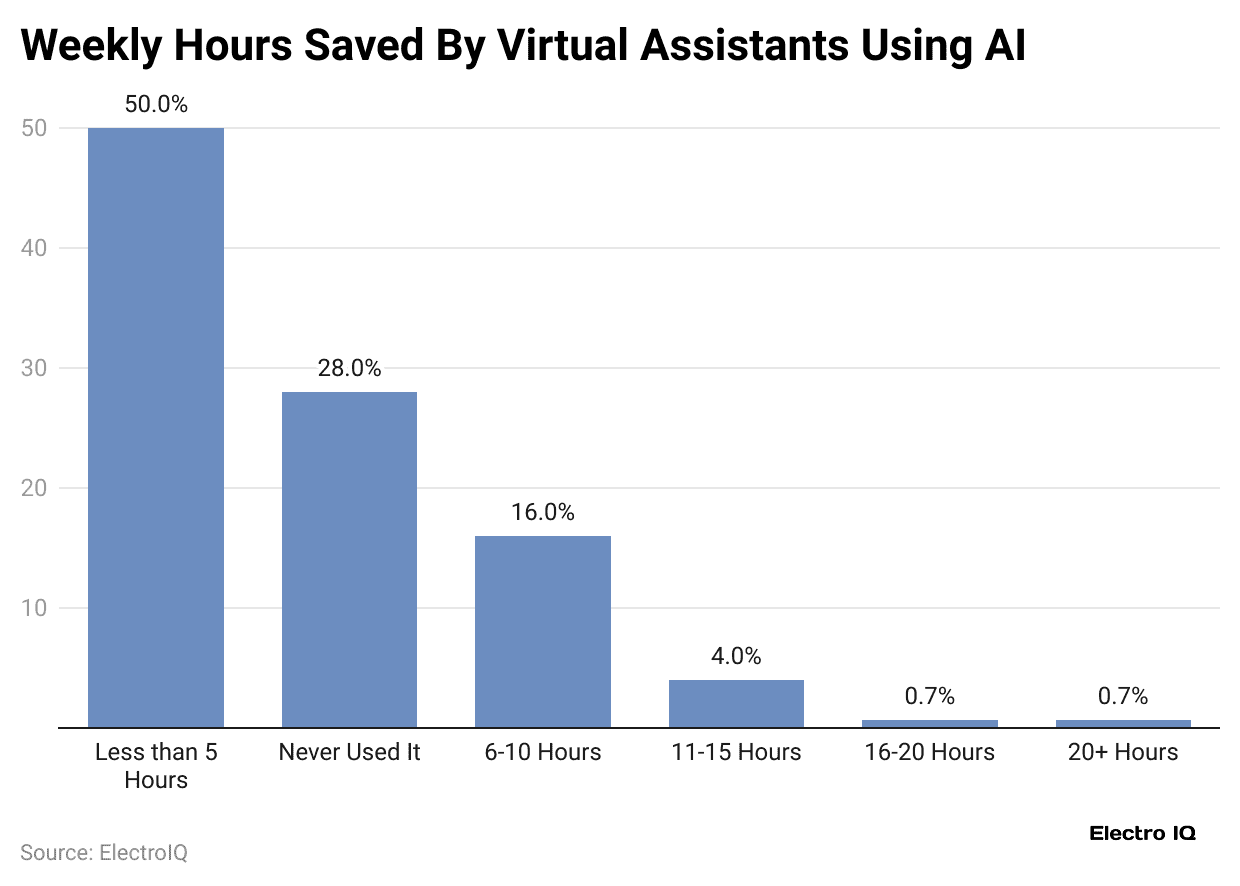
- The chart shows that almost 50% of IVA users saved less than 5 hours per week.
- About 28% of participants have never used an IVA, 16% of users save between 6 and 10 hours weekly, and 4% save 11 to 15 hours.
- Only 0.7% reported saving 16 to 20 hours, while another 0.7% saved more than 20 hours each week.
Adoption Statistics of Virtual Assistants in the Home
- According to market.biz, in 2025, virtual assistants are most commonly used with televisions (58%), followed by lights (36%), thermostats (29%), and outlets or switches (26%).
- Their adoption is lower for locks or garage doors (22%), smart appliances (19%), alarm systems (18%), and doorbells (16%)
Voice Assistant Market Statistics
- According to eMarketer, the U.S. voice assistant user base is projected to reach around 154.3 million in 2025, marking a 3.3% rise from 2024.
- Google Assistant will lead with 92.4 million users, followed by Apple’s Siri (87 million) and Amazon Alexa (77.6 million).
- Globally, NextMSC estimates the voice assistant market at USD 7.35 billion in 2024, expected to hit USD 33.74 billion by 2030 at a 26.5% CAGR.
- Meanwhile, Straits Research projects the voice assistant application market at USD 6.3 billion in 2025.
- The Intel Market Research forecasts the smart speaker market to reach USD 19.62 billion in 2025.
Top 5 Voice Search Statistics
- According to Synup, the number of active voice assistant devices worldwide is expected to double to 8.4 billion units by 2024.
- Google reports that nearly 80% of voice searches will be conversational.
- Besides, keyword use such as “best,” “easy,” “free,” and “top” will rise by 20%.
- The “near me” searches currently 76% of all voice queries and are projected to triple.
- It is expected that the global voice recognition market will reach USD 26.8 billion by 2025.
Chatbot Market Size
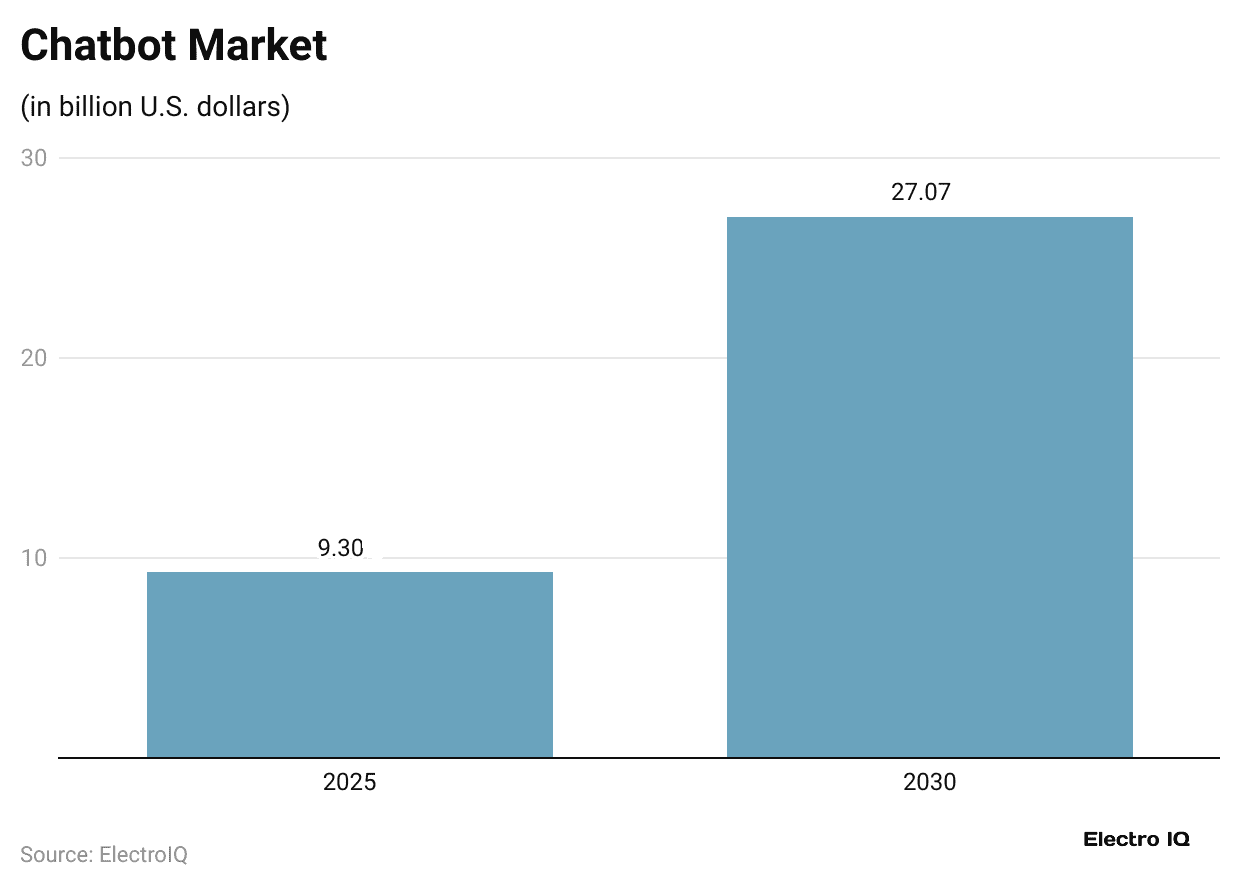
- The global chatbot market will reach up to USD 9.30 billion by 2025 and is expected to reach USD 27.07 billion by 2030.
- This growth represents a strong CAGR of 23.8% from 2025 to 2030.
- The chatbot market was largely driven by the platform and software segment, which held a 64.7% revenue share, while services are expected to grow at a 24.8% CAGR through 2030.
- In terms of applications, customer support contributed 42.4% of market value, whereas HR and recruiting are forecasted to expand at a 25.3% CAGR.
- Cloud deployment dominated with a 78.4% share, growing at 24.7% CAGR, and large enterprises led with 68.2%, though SMEs show a faster 25.1% CAGR.
- Regionally, North America captured 39.16%, while the Asia-Pacific is projected to grow at a 25.4% CAGR from 2025 to 2030.
Smart Speaker Market Size
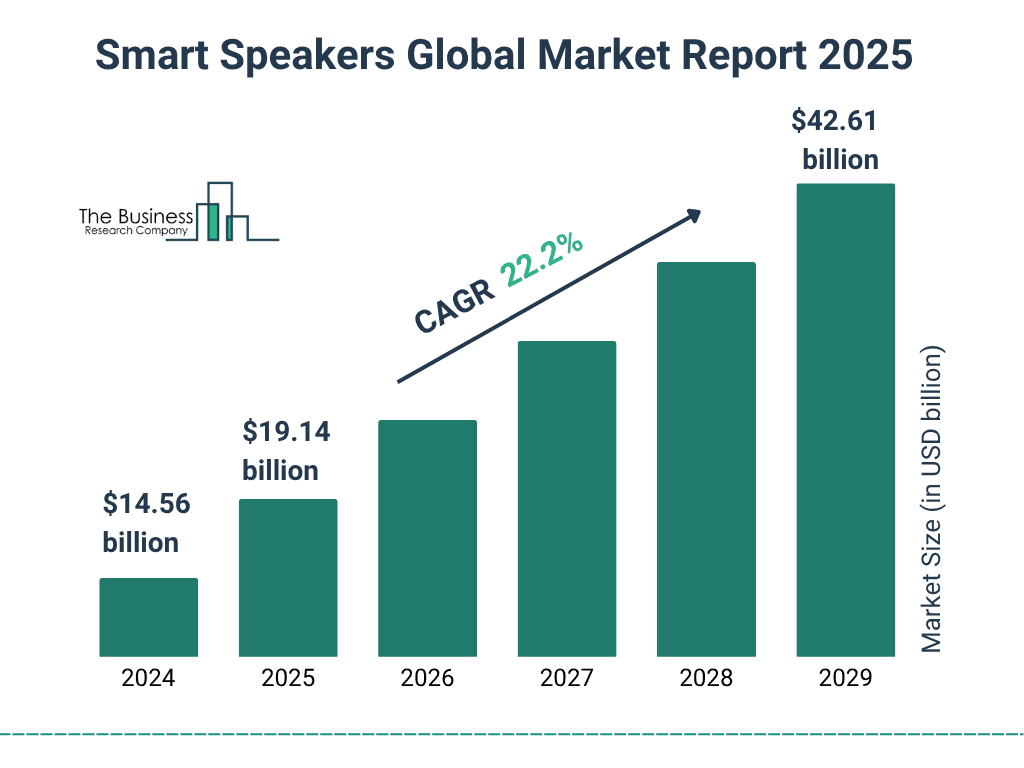
- The smart speakers market has seen rapid growth and is expected to rise from USD 14.56 billion in 2024 to USD 19.14 billion by 2025.
- The market is projected to reach USD 42.61 billion by 2029, growing at a strong 22.2% compound annual growth rate (CAGR) between 2025 and 2029.
Perceived Intelligence of Virtual Assistants Among Users
- According to Market.us, Amazon’s Alexa is termed the most intelligent virtual assistant, earning recognition from 44% of respondents.
- Google Assistant follows closely at 33%, Apple’s Siri ranks third with 30%.
- Meanwhile, Microsoft’s Cortana is perceived as intelligent by 8% of users, and Samsung’s Bixby by 5%.
- A small share of 3% mentioned other assistants.
Consumer Shopping Trends Through Virtual Assistants
- As of 2025, about 34% of people use voice assistants to order food or takeout, while 31% buy groceries through them.
- Around 24% purchase books, and 22% shop for home care products or electronics.
- Additionally, 21% book transportation, 16% make reservations, and only 3% purchase clothing using voice assistants.
Educational Qualifications of Intelligent Virtual Assistants
- The educational background of virtual assistants shows that around 45% of virtual assistants hold a bachelor’s degree.
- Meanwhile, 24% possess associate degrees, while 8% have earned a master’s degree.
- Additionally, 7% of virtual assistants hold high school diplomas, and 6% have completed other types of degrees or certifications.
Reasons For Implementing an Intelligent Virtual Assistant
- The company aims to expand its support team’s capacity and provide round-the-clock assistance to customers for better service.
- It also seeks to boost customer satisfaction (CSAT) and increase overall revenue.
- Additionally, the company wants to cut costs caused by employee turnover and allow support staff to focus on complex issues instead of repetitive tasks.
Conclusion
After completing the article on Intelligent Virtual Assistants Statistics, it can be concluded that the market is changing the way people connect with technology. Artificial Intelligence, Machine Learning, and Natural Language Processing all three segments continued to evolve and become more intelligent, faster, and more capable of understanding users. They now serve an important role in business operations, customer interactions, and daily activities.
They help make customer service, healthcare, and retail processes smoother and more efficient. Along with expanding adoption and improving accuracy, Intelligent Virtual Assistants are moving a step forward to the advanced digital world, making communication more personal, responsive, and convenient for every individual.
Sources
FAQ.
VAs use a combination of AI, ML, and NLP to allow interpretation of user input, learn from interactions, and deliver accurate and relevant responses in real time.
Popular Intelligent Virtual Assistants include Amazon Alexa, Apple Siri, Google Assistant, Microsoft Cortana, and Samsung Bixby.
IVAs are widely used across sectors such as customer service, healthcare, banking, retail, education, and IT support.
Key advantages include 24/7 availability, cost reduction, faster response, personalised assistance, and multilingual communication.
By 2028, half of the U.S. workforce may work virtually as IVAs become smarter and empathetic.

Maitrayee Dey has a background in Electrical Engineering and has worked in various technical roles before transitioning to writing. Specializing in technology and Artificial Intelligence, she has served as an Academic Research Analyst and Freelance Writer, particularly focusing on education and healthcare in Australia. Maitrayee's lifelong passions for writing and painting led her to pursue a full-time writing career. She is also the creator of a cooking YouTube channel, where she shares her culinary adventures. At Smartphone Thoughts, Maitrayee brings her expertise in technology to provide in-depth smartphone reviews and app-related statistics, making complex topics easy to understand for all readers.





